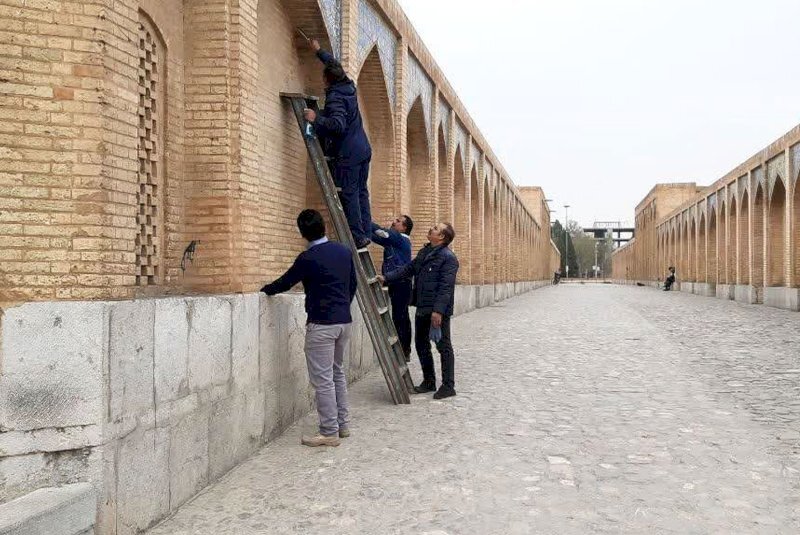Hurt by firecrackers, centuries-old bridge undergoes urgent restoration

TEHRAN – The 17th-century Khaju Bridge in the central province of Isfahan has undergone urgent restoration after being damaged by firecrackers, a provincial tourism official has said.
A few individuals caused minor damage to the bridge’s deck through the throwing of firecrackers and incendiary materials during the Iranian fire festival, Chaharshanbeh-Suri, Hadi Allahyari explained on Wednesday.
Restorers were sent to the bridge as soon as the report was received, and after completing a primary inspection, they found that the bridge walls had not suffered significant damage, the official added.
Firecracker marks were quickly removed from the bridge by the restorers, and this historical structure is now ready for Noruz tourists, he noted.
Furthermore, the cultural heritage protection unit of the province initiated judicial proceedings to identify and arrest the perpetrators of this destruction, he said.
Measuring 133 meters long and 12 meters wide, Pol-e Khaju is equipped with several sluice gates under its lower archways that double it as a dam. The monument was completed around 1650 under the patronage of Shah Abbas II, the seventh Safavid king who ruled the country from 1642 to 1666.
In its heyday, the central passageway on the upper level of the bridge was utilized by horse riders and carts while the vaulted paths on either side were dedicated to pedestrians. It used to be a temporary hangout for the king and the royal family of the time and later turned into a place for public meetings where locals, domestic and foreign travelers come to revel in a cozy atmosphere and take the air.
Narratives say that the bridge was replaced by the ruins of an older one, which dated to the time of Tamerlane, the Turco-Mongol conqueror who reigned from 1370 to 1405. Abundant Persian gardens, gorgeous Islamic buildings, historic bazaars and picturesque bridges, along with ubiquitous tree-lined boulevards, give the city a significant visual appeal.
Chaharshanbeh-Suri is held on the night before the last Wednesday of the year, when families and friends gather by bunches of open fires and keep them lit till dawn.
In ancient Persia, fire was deemed a sacred element, a belief that modern Zoroastrians still adhere to. Fire has been supposed to give people warmth and energy and take away their paleness, sickness, and problems in return.
However, in recent years, the festival has turned into a nightmare for many because it has been given new definitions.
Earsplitting bangs dominate everywhere, caused by the loud explosion of fireworks from locally made firecrackers to imported ones. The city feels like being under siege; fireworks go off every second, shaking windows.
Each year, hundreds of people are burned and injured so that to be on the safe side many prefer to stay at home before nightfall.
ABU/AM
Leave a Comment